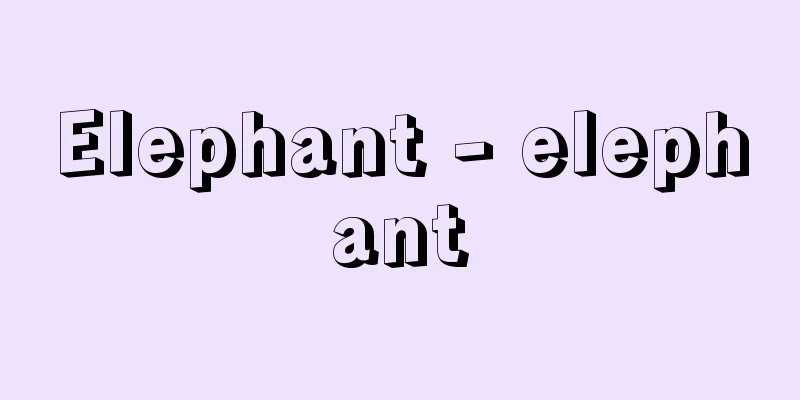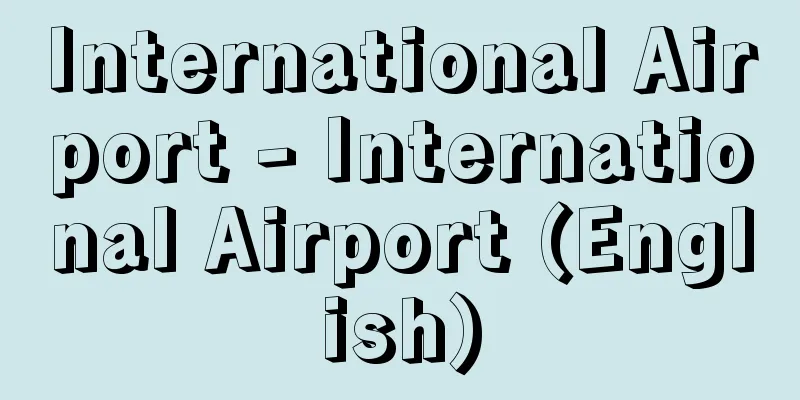Elephant - elephant

|
〘Noun〙① The shape of an object. The figure of a person. Also, something that is made or painted to imitate the shapes of gods, Buddhas, humans, animals, etc. ※From the Sanbo-e (984) in the Kanchi-in Hon (Sanbo-e) (Kanchi-in), "There is a statue of Kannon made by an ancient king." [Suijing-chu]② An abbreviation of "zoubou (image law)." ※From Nichiren Ibun - Kaimoku-sho (1272), "A beautiful verse says, If we talk about the era, it is the beginning of the end of the image, if we look at the earth, it is the east of the Tang Dynasty and the west of the Jade Dynasty."③ When light emitted from an object is refracted or reflected by a lens or mirror, the light rays gather together and form a shape similar to the object. An image that is actually formed by gathering together is called a real image. Also, when light that passes through or is reflected by a lens or mirror does not actually gather, but travels as if it is coming from an image, when this light is received by the eye, it appears that an object is present where the image is, and this is called a virtual image. [Japanese-English-French-German Dictionary of Physics Academic Terms (1888)] ④ In mathematics, an element or set that corresponds to another element or set by a mapping. When f is a mapping from set A to set B, the element b of B that corresponds to element a of A by f is called the image of a by f, and is represented by f(a). In addition, the set of images of elements of a subset M of A by f is called the image of M by f, and is written as f(M). Source: The Selected Edition of the Japanese Language Dictionary About the Selected Edition of the Japanese Language Dictionary Information |
|
〘名〙① 物の形。人のすがた。また、神・仏・人・獣などの形をまねて作ったり描いたりしたもの。※観智院本三宝絵(984)中「昔の国王のつくれる観音の像あり」 〔水経注〕② 「ぞうぼう(像法)」の略。※日蓮遺文‐開目抄(1272)「秀句に云く、代を語れば則像の終り末の初め、地を尋れば則唐の東羯の西」③ 物体から出た光が、レンズや鏡によって屈折または反射した結果、光線が集合して物体と相似の形を形成したもの。実際に集合してつくる像を実像という。また、レンズや鏡を通過または反射した光が、実際には集合しないが、あたかもある像から発したように進む場合、この光を目に受けると、その像のところに物体が存在するように見えるのを虚像という。〔物理学術語和英仏独対訳字書(1888)〕④ 数学で、写像によって元または集合に対応する元または集合。fが集合Aから集合Bへの写像のとき、fによってAの元aに対応するBの元bを、fによるaの像といい、f(a) で表わす。また、Aの部分集合Mの元のfによる像の全体を、fによるMの像といい、f(M) と書く。
出典 精選版 日本国語大辞典精選版 日本国語大辞典について 情報 |
<<: Elephant seal (elephant seal)
Recommend
Hakatabushi - Hakatabushi
〘Noun〙 A type of folk song. It is a song sung in t...
Chinju no Mori - Shrine Forest
The grove surrounding a shrine dedicated to the gu...
revenue tariff
A tariff is a tax imposed primarily for the purpo...
Mound - Tsuka
It refers to a pile of earth, but there are also ...
SAR (American Patriotic Organization)
...Membership is available to children of familie...
Kakake
…Rice immediately after harvest contains about 20...
Potter's wheel
〘Noun〙 (general term for machines that perform rot...
simple closed curve
…When t ≠ t ′ and ( f ( t ), g ( t )), ( f ( t ′)...
Katsurao [village] - Katsurao
A village in Futaba County, eastern Fukushima Pref...
trial and error learning
...If the animal successfully exits the box, it i...
note
…Therefore, the two are considered to be closely ...
The Gospel According to John
One of the four gospels in the New Testament. It w...
Tabasco - Tabasco (English spelling)
It is an annual plant of the nightshade family (A...
Kibi no Kamitsumichi no Tasa - Kibi no Kamitsumichi no Tasa
A figure in the legend of a rebellion around the 5...
Erogram - Erogram
⇒Aerogram Source: About Shogakukan Digital Daijise...









